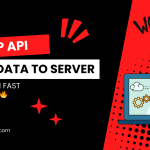The Best Fluffy Pancakes recipe you will fall in love with. Full of tips and tricks to help you make the best pancakes.
The Rise of Edge AI in IoT: Enhancing Real-Time Decision-Making
In recent years, there has been a remarkable rise in the integration of Edge AI (Artificial Intelligence) with IoT (Internet of Things) devices. This convergence is significantly enhancing real-time decision-making capabilities across various industries and applications.
What is Edge AI in IoT?
Edge AI refers to the deployment of artificial intelligence algorithms on edge computing devices, such as IoT sensors, gateways, and edge servers, rather than relying solely on centralized cloud servers. This enables data processing and analysis to occur closer to the data source, reducing latency and improving efficiency.
Enhancing Real-Time Decision-Making
By combining Edge AI with IoT devices, organizations can leverage the power of AI algorithms to process data locally and make real-time decisions without the need for constant communication with cloud servers. This is particularly crucial in scenarios where immediate action is required, such as in autonomous vehicles, industrial automation, and healthcare monitoring.
Benefits of Edge AI in IoT
The integration of Edge AI in IoT offers several key benefits:
- Reduced Latency: By processing data locally, Edge AI minimizes the latency associated with sending data to centralized servers for analysis, enabling faster response times.
- Improved Data Privacy and Security: Keeping sensitive data local enhances privacy and security by reducing the risk of data breaches during transmission.
- Bandwidth Efficiency: Edge AI helps reduce the amount of data that needs to be transmitted to the cloud, optimizing bandwidth usage and lowering costs.
- Scalability: Edge AI solutions can be easily scaled to accommodate growing data volumes and evolving business needs.
Use Cases of Edge AI in IoT
The integration of Edge AI in IoT is being applied across various industries and use cases, including:
- Smart Cities: Optimizing traffic flow, energy management, and public safety through real-time data analysis at the edge.
- Manufacturing: Enhancing predictive maintenance, quality control, and process optimization in smart factories.
- Healthcare: Enabling remote patient monitoring, personalized treatment recommendations, and early disease detection through wearable devices.
- Retail: Improving customer experience, inventory management, and targeted marketing strategies based on real-time analytics.
Conclusion
The integration of Edge AI in IoT is revolutionizing the way data is processed, analyzed, and acted upon in real-time. By bringing AI capabilities closer to the edge, organizations can unlock new opportunities for efficiency, innovation, and competitiveness across a wide range of industries. As the technology continues to evolve, we can expect to see even greater advancements in enhancing real-time decision-making through Edge AI in IoT.




